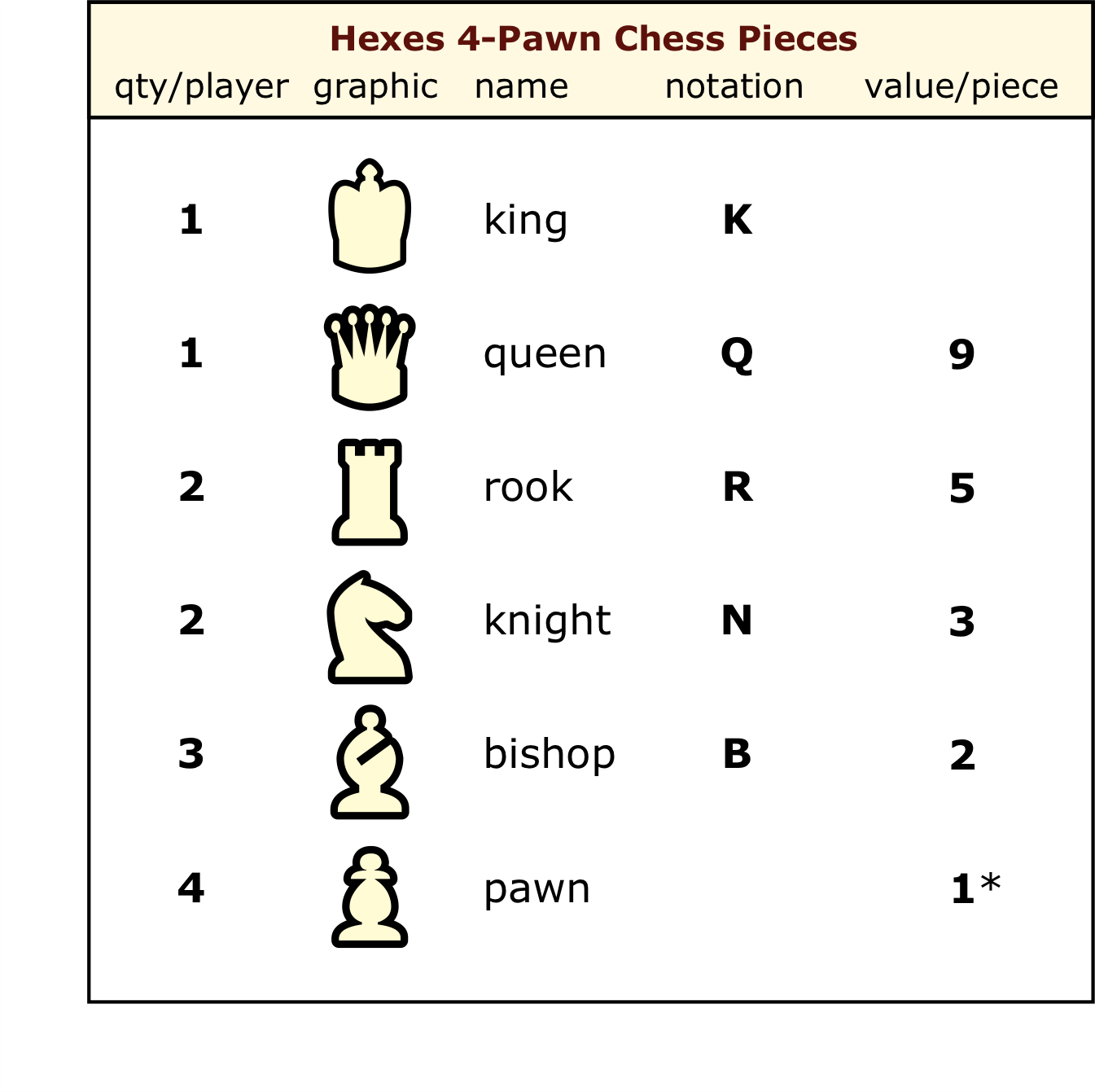Overview: Hexes 4-Pawn ChessEach player commands identical forces comprised of a team of specialized chess pieces: the king; the queen; two rooks; two knights; three bishops; and four pawns. The players take turns, moving one piece per turn. White makes the opening move. The winner of the previous match plays Black. 
ObjectThe object of the game is to trap the opponent's king in such a way that it is both under threat (check) and unable to escape (checkmate). StrategyThere are two main considerations in a winning chess strategy. These are: material (your pieces) and position (how they are distributed). It is possible to have an advantage in material but a disadvatage in position, or vice versa.
*Pawns in Hexes Chess have gained a bit more mobility than the other pieces, and would be more accurately valued at 1.17. While all the other pieces have gained 50% in mobility over their square-chess counterparts (from 8 directions to 12 for the king, queen and knights; and from 4 directions to 6 for the rooks and bishops), the pawn, when you include its capture directions has gained 67% (from 3 directions to 5). |
 Note the king has no designated value because it cannot be captured. The pawn has no letter symbol because when writing down a pawn move, it is identified by its location. (See
Note the king has no designated value because it cannot be captured. The pawn has no letter symbol because when writing down a pawn move, it is identified by its location. (See